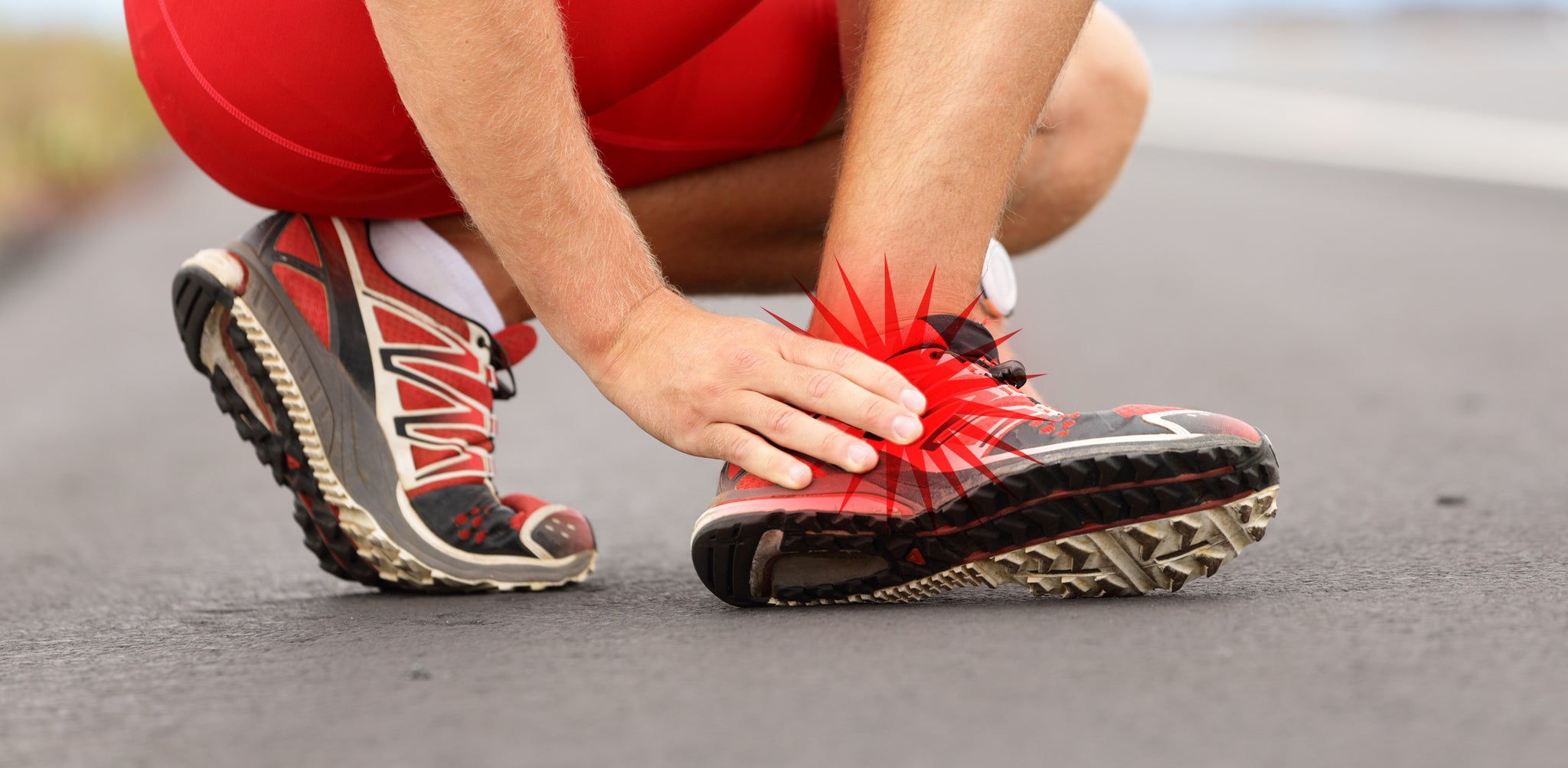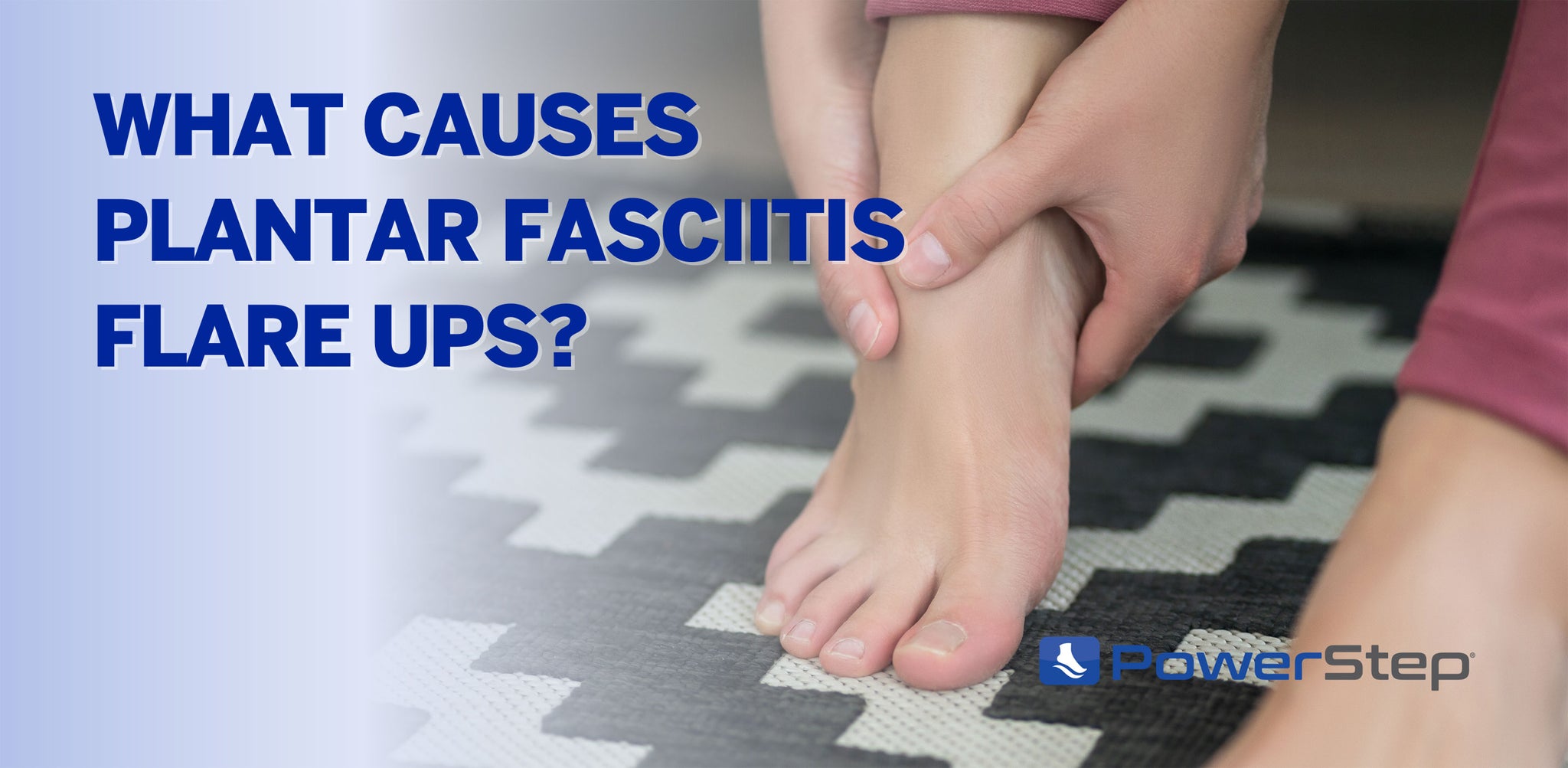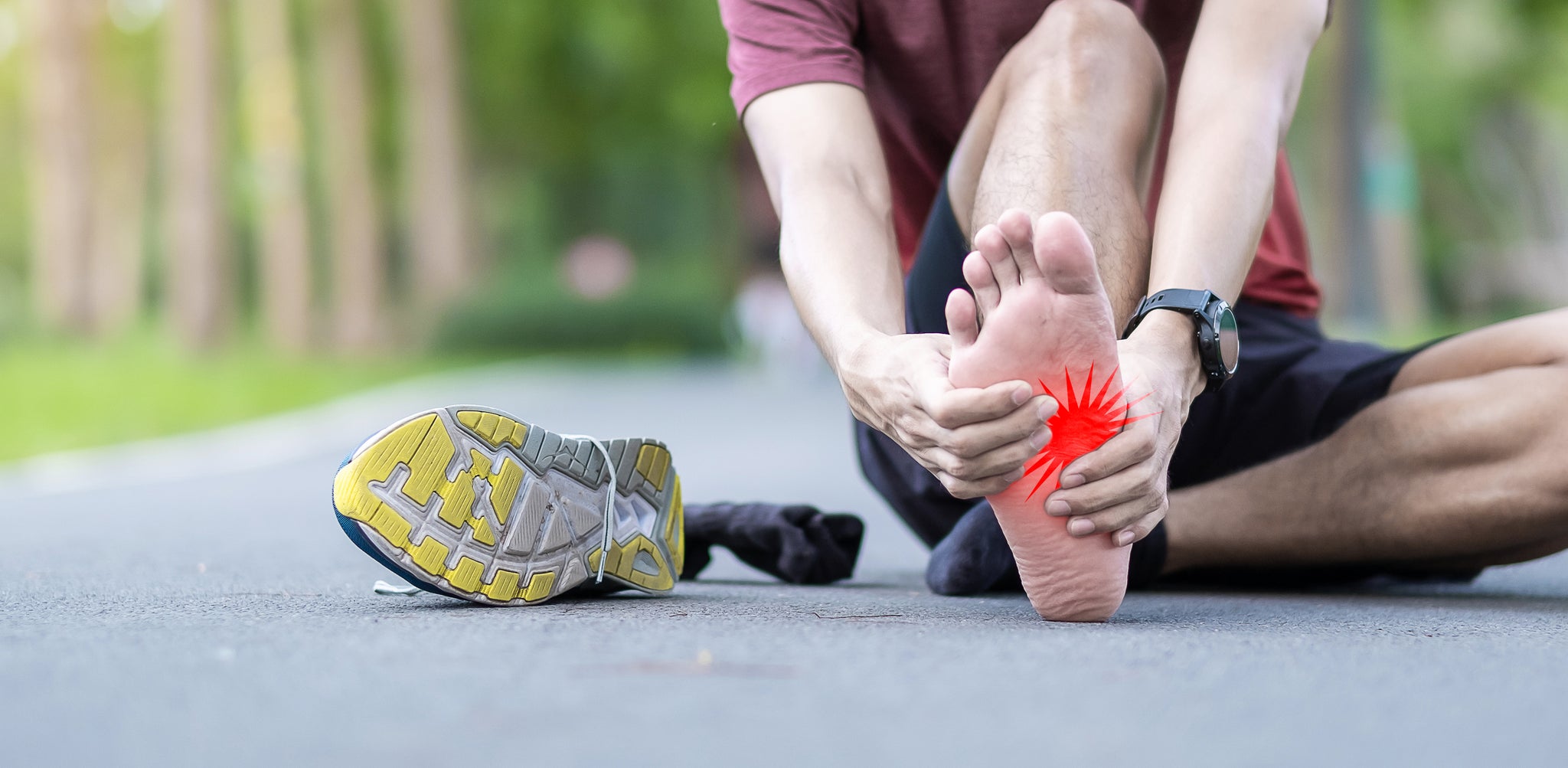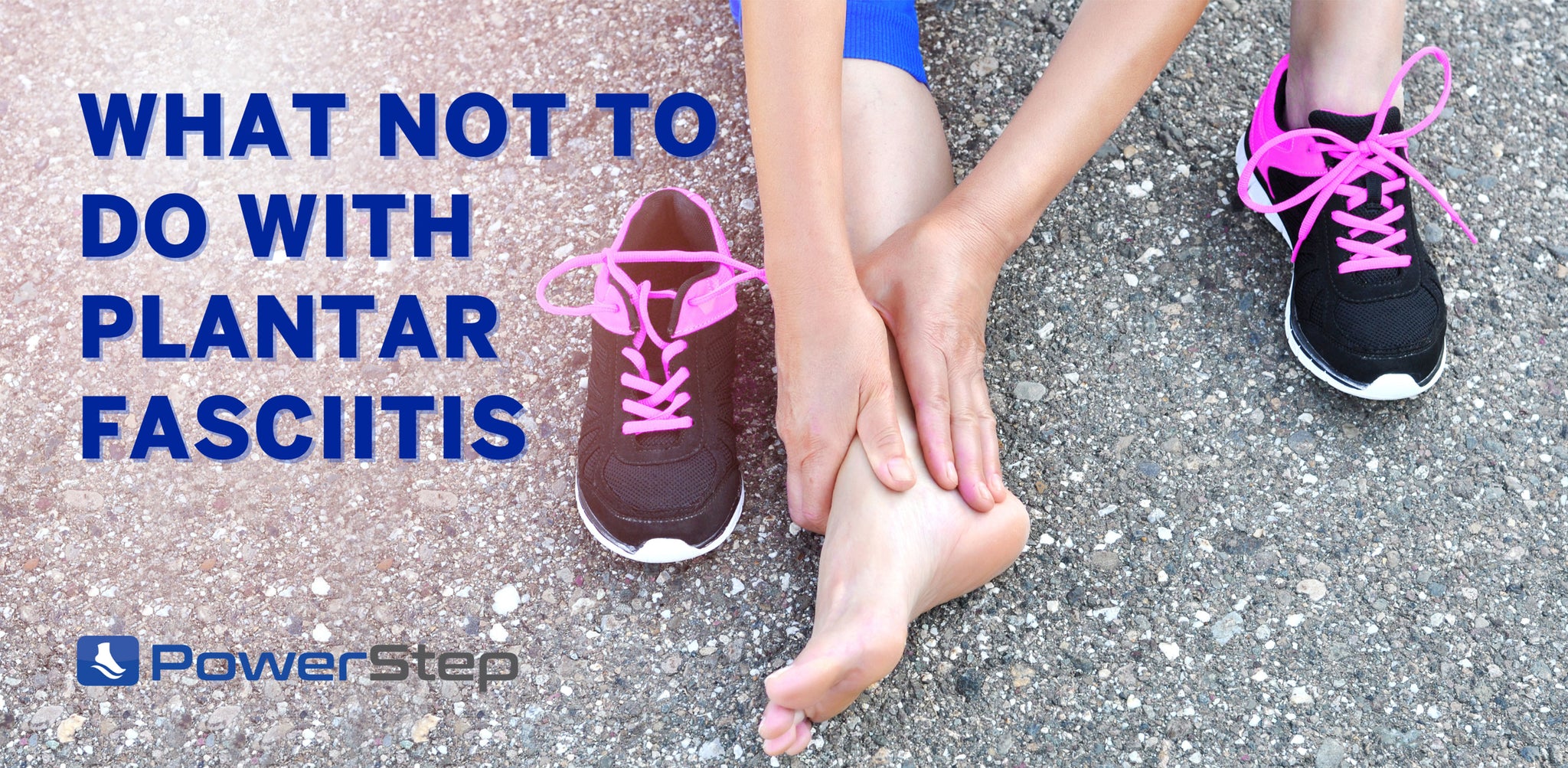Relief for Heel Spurs & Sore Heels
Noticing a stabbing ache or swelling under your heel? PowerStep® orthotics cushion your step to ease pressure and help prevent worsening heel issues over time.
Heel (Calcaneal) Spurs & Heel Pain

Heel Spurs Explained
Heel spurs can happen when you have heel pain from plantar fasciitis. Also called calcaneal spurs, these small, bony growths are painless on their own.
They cannot be cured, but orthotic insoles and heel cushions can help ease discomfort and prevent conditions that cause heel spurs including plantar fasciitis.
What Is a Heel Spur?
How Heel Spurs Form and Cause Discomfort
A heel spur is a type of bone spur on the heel bone, or the calcaneus. It is a small, bony growth caused by repetitive strain on the plantar fascia, a ligament connecting the heel to the toes. Your body tries to heal small tears in the ligament, creating calcium deposits that develop over time as heel spurs.

Heel spurs do not go away, but they are harmless on their own. Most people will not notice them until they have heel pain from plantar fasciitis. When left untreated, pain may worsen, making it hard to stand, walk, or be active. Treatments like rest, shoe insoles, and heel cushions can help ease symptoms and relieve pain.
Symptoms of a Heel Spur
Heel spurs usually do not have symptoms unless they are related to another foot condition. You might experience pain or discomfort when your heel rubs against something or gets irritated during plantar fasciitis flare ups.
If you have heel pain with heel spurs, it probably feels like plantar fasciitis since the conditions can occur at the same time. A heel spur may be present in one foot or both. They do not go away, but symptoms like pain can be relieved with plantar fasciitis insoles.
Like plantar fasciitis, heel spur symptoms can include:
- Sharp or stabbing heel pain
- Pain that worsens after standing or walking
- Swelling around the heel
- Pain in the sole of your foot
- Difficulty sleeping due to heel pain
What Causes Heel Spurs?
Repetitive or long-term strain on the ligaments and tissues around the heel can lead to heel spurs. One common cause is participating in high-impact activities like running or various sports that place stress on the heels.
It is important to note that calcaneal spurs and plantar fasciitis are related, but not everyone with plantar fasciitis also gets heel spurs. The best way to prevent bone spurs on your heels and other foot conditions is wearing insoles for heel pain.
Other heel spur causes and risk factors are:
- Running on hard surfaces
- Wearing ill-fitting shoes that lack support or cushioning
- Being overweight
- Gait disorders that change how you walk
- Having flat feet or high arches
- Spending long periods of time on your feet
- History of plantar fasciitis
How to Treat Heel Spurs
A healthcare provider or podiatrist can tell if you have a heel spur based on your symptoms, a physical exam, and x-rays. Treated the same way as plantar fasciitis, simple prevention methods like adding insoles to your shoes can help relieve discomfort.
In severe cases when traditional treatment does not work, heel spurs can only be removed with surgery. Heel spur removal surgery is rare, since it is not the source of pain.
Typical treatment for heel spurs involves:
- Taking a break from high impact activities
- Applying ice to the bottom of your foot and heel
- Using NSAIDs or natural topical pain relievers
- Wearing shoe insoles with arch support
- Adding cushioned heel inserts to your shoes
Pain Relief & Insoles for Heel Spurs
PowerStep® insoles combine shock absorption and arch support to relieve heel pain and prevent the aggravation of heel spurs, keeping every step more comfortable.


Need immediate relief from heel spur pain? PowerStep’s orthopedic insoles for heel spurs feature our clinically proven arch support, deep heel cradle, and premium cushioning to reduce strain, absorb shock, and increase comfort.
Relieve pain and prevent heel spurs with the following best insoles for heel pain:
PowerStep® Pinnacle Full Length Orthotics
PowerStep® Pinnacle insoles are the #1 podiatrist-recommended brand of insoles for plantar fasciitis and heel pain.
With our signature arch support, deep heel cradle, and dual-layer cushioning, Pinnacle insoles offer the perfect balance of comfort and support, making them the best insoles for heel spurs and plantar fasciitis.

PULSE® Performance Insoles
PowerStep® PULSE® Performance insoles help relieve and prevent pain during athletic activities that may cause heel spurs.
Along with our trusted arch support, these heel spur shoe insoles feature ShockAbsorb™ Premium Foam to absorb shock and limit stress on your feet, ankles, and joints, so you can stay active.

ComfortLast® Cushioned Insoles
PowerStep® ComfortLast® insoles have a special gel heel relief zone designed to absorb shock and soften impact.
They protect your heels from pain and injury while contoured arch support and dual-layer cushioning conform to your feet for enhanced comfort from heel to toe.

PowerStep® Pinnacle Memory Foam Insoles
PowerStep® Pinnacle Memory Foam insoles offer the same support as our Pinnacle insoles with the plush comfort of memory foam cushioning.
This slow-recovery foam absorbs shock and conforms to your feet for added comfort and pressure relief, alleviating heel pain from heel spurs and more.

FAQs About Heel Spurs
Have other questions about what heel spurs are, what causes them, and how to avoid them? Browse these frequently asked questions to learn more about treating heel spurs and relieving pain.
Learn About Heel Spurs & More Through Our Blog
Other Common Foot Conditions
REFERENCES
- Heel Spurs: Symptoms, Causes, and Treatment. (n.d.). Cleveland Clinic.
- Plantar Fasciitis and Bone Spurs - OrthoInfo - AAOS. (2010). Aaos.org.

















